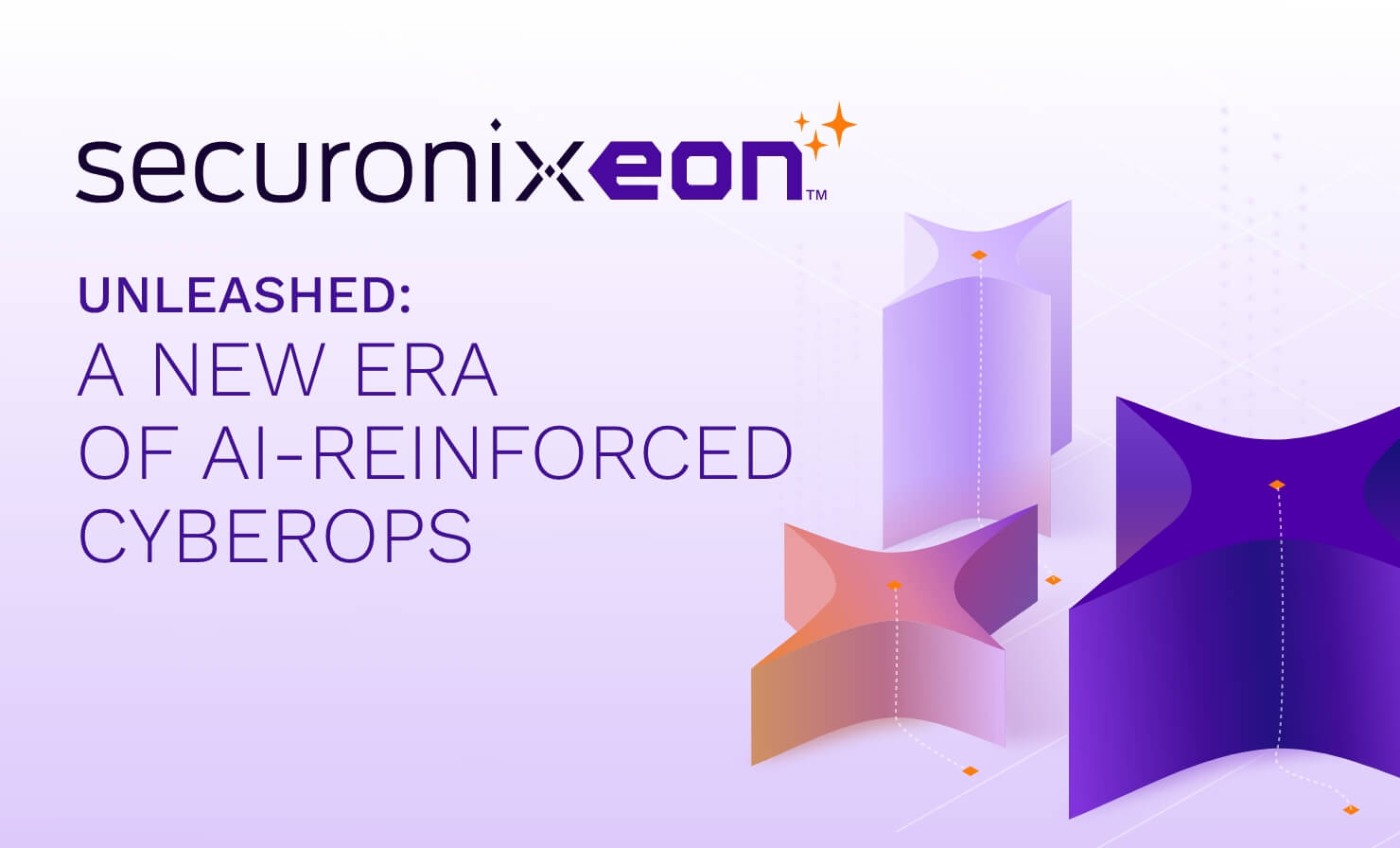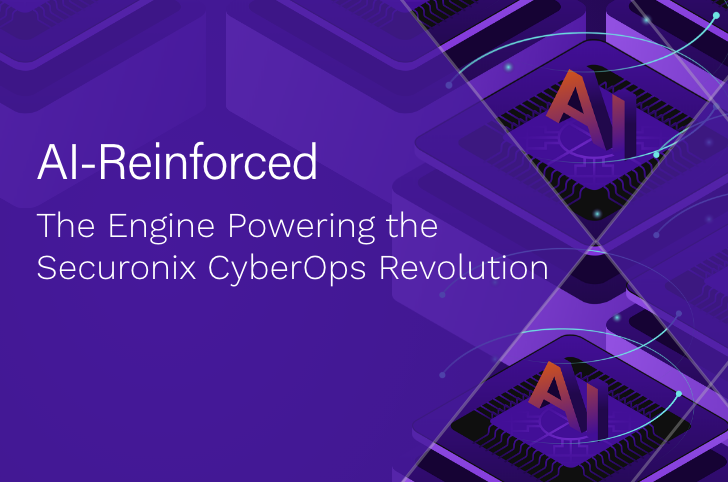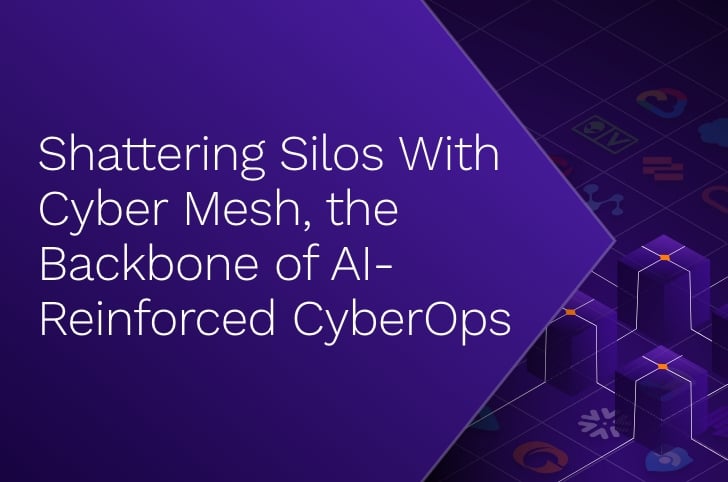- Why Securonix?
- Products
-
- Overview
- 'Bring Your Own' Deployment Models
-
- Products
-
- Solutions
-
- Monitoring the Cloud
- Cloud Security Monitoring
- Gain visibility to detect and respond to cloud threats.
- Amazon Web Services
- Achieve faster response to threats across AWS.
- Google Cloud Platform
- Improve detection and response across GCP.
- Microsoft Azure
- Expand security monitoring across Azure services.
- Microsoft 365
- Benefit from detection and response on Office 365.
-
- Featured Use Case
- Insider Threat
- Monitor and mitigate malicious and negligent users.
- NDR
- Analyze network events to detect and respond to advanced threats.
- EMR Monitoring
- Increase patient data privacy and prevent data snooping.
- MITRE ATT&CK
- Align alerts and analytics to the MITRE ATT&CK framework.
-
- Resources
- Partners
- Company
- Blog
SIEM
Enterprise cybersecurity is the backbone that enables organizations to protect their sensitive data, systems, and networks, ensuring the integrity of operations in the face of a rapidly evolving landscape of cybersecurity challenges. Enterprise cybersecurity refers to the measures, technologies, and practices implemented by large organizations to protect their digital assets. It encompasses a range of strategies to defend against various cyber threats that target enterprise-level data, networks, applications, users and entities. Unlike personal or small business cybersecurity, enterprise cybersecurity deals with more complex and large-scale threats, requiring sophisticated solutions tailored for vast infrastructures.
At its core, enterprise cybersecurity involves comprehensive protection against data breaches, malware, ransomware, insider threats, AI-powered attacks and other forms of cybercrime. The scale and complexity of enterprises mean that these defenses must integrate across departments, locations, and users. This interconnectedness distinguishes enterprise cybersecurity from other forms of protection, like personal or small business cybersecurity, which typically focus on more simple turn-key small-scale solutions.
Why Enterprise Cybersecurity is Crucial
The global cyber threat landscape has been rapidly evolving, and large enterprises are a prime target for attackers. With the rise of nation-state hackers, organized cybercrime syndicates, and the increased use of AI in launching attacks, enterprises must bolster their defenses to safeguard their assets.
A cyberattack on an enterprise can disrupt operations, leading to significant downtime, loss of revenue, and even permanent reputational damage. For example, the infamous 2017 WannaCry ransomware attack brought organizations to a standstill, including multinational corporations. Enterprises also handle large amounts of sensitive information, such as customer data, financial records, and proprietary information. A single breach can compromise millions of records, leading to regulatory fines, lawsuits, and loss of customer trust.
Beyond financial consequences, enterprise cybersecurity is essential for maintaining business continuity. With critical operations relying on digital infrastructure, cyber resilience is a business priority, ensuring that organizations can recover quickly from incidents and maintain ongoing operations.
What an Enterprise Cybersecurity Attack Looks Like
Enterprise cyberattacks come in various forms, each with potentially devastating consequences. A typical example is a spear-phishing attack aimed at a high-ranking executive (known as “whaling”). In such an attack, cybercriminals craft highly personalized emails that seem legitimate, tricking the recipient into disclosing sensitive information or clicking a malicious link.
In 2020, an international conglomerate fell victim to a ransomware attack that encrypted thousands of its systems worldwide. The attackers demanded millions in ransom, forcing the company to halt its operations for several days, causing losses in the millions. This example illustrates the severity and scale of attacks that enterprises must be prepared for.
Core Components of Enterprise Cybersecurity
Enterprise cybersecurity relies on several essential layers, each safeguarding different aspects of an organization’s digital environment. Together, these components create a multi-faceted defense system designed to protect against complex cyber threats while ensuring data integrity and business continuity.
Enterprise Network Security
At the heart of enterprise cybersecurity is network security, designed to protect an organization’s digital environment from unauthorized access, attacks, or misuse. It includes key components like firewalls, which act as barriers between trusted and untrusted networks; intrusion detection systems (IDS), which monitor network traffic for suspicious activities; and network segmentation, which limits the spread of potential breaches within different network zones.
Network security is fundamental to the overall cybersecurity strategy, acting as the first line of defense against cyberattacks targeting enterprise IT infrastructure.
Enterprise IT Security
IT security in the enterprise context encompasses the protection of the organization’s IT systems, including computers, servers, applications, and storage systems. IT security measures include access controls to ensure that only authorized personnel have access to sensitive data and systems, endpoint protection to secure devices like laptops and smartphones from malware, and application security to protect software from vulnerabilities.
IT security plays a crucial role in safeguarding an enterprise’s technological foundation and ensuring that all systems function safely within the broader cybersecurity framework.
Cybersecurity for Enterprise
Enterprise cybersecurity is distinct from other security models due to its comprehensive nature, which integrates all digital assets and infrastructures. Cybersecurity for enterprises focuses on tailored solutions that scale to handle complex attack surfaces, such as cloud environments, IoT/OT devices, and remote workforces.
Common strategies include the use of security information and event management (SIEM) systems to monitor and respond to threats in real time, zero-trust architecture that assumes no part of the system is inherently safe, and regular vulnerability assessments to proactively identify and fix weak points.
Enterprises often adopt best practices like regular employee cybersecurity training, encryption of sensitive data, and incident response planning to minimize the impact of potential attacks.
Technologies and Tools for Enterprise Cybersecurity
To counter increasingly sophisticated cyber threats, enterprises deploy a range of advanced tools and technologies that detect, protect, and respond to potential breaches. These solutions form a critical part of a proactive cybersecurity strategy, enhancing both preventative and reactive capabilities.
Advanced Threat Protection
Advanced Threat Protection (ATP) involves sophisticated tools and strategies designed to detect, prevent, and respond to complex cyber threats. ATP solutions include SIEM systems that aggregate and analyze logs from across the enterprise, threat intelligence platforms that provide insights into emerging threats, and user and entity behavioral analytics that identify anomalies in user and device behavior.
These technologies help enterprises stay one step ahead of attackers, detecting suspicious activity before it leads to a breach.
Data Encryption and Protection
Encryption is one of the most critical aspects of enterprise cybersecurity, as it converts sensitive data into unreadable code that only authorized users can decrypt. There are various types of encryption, such as symmetric and asymmetric encryption, each suited for different applications, from encrypting emails to securing databases.
Best practices in data protection include encrypting sensitive information both at rest and in transit, implementing robust key management systems, and regularly updating encryption protocols to prevent vulnerabilities.
Incident Response and Management
A well-defined incident response plan is crucial for enterprises to minimize the damage of cyberattacks. Incident response involves a structured process of detecting, investigating, containing, and recovering from a security breach.
The key steps in an incident response plan include identifying the threat, containing the attack to prevent further damage, eradicating the root cause, recovering systems, and conducting post-incident analysis to improve future defenses. Effective incident management tools, such as automated alerts and forensic analysis, help enterprises reduce downtime and respond swiftly to security events.
Future of Enterprise Cybersecurity
As cyber threats continue to evolve, so must enterprise cybersecurity strategies. Emerging technologies like artificial intelligence, machine learning, and quantum computing are poised to reshape the cybersecurity landscape. AI-reinforced security solutions can detect and respond to threats in real time, while quantum computing may render traditional encryption methods obsolete, prompting the development of quantum-resistant algorithms.
To stay ahead of these evolving threats, enterprises need to adopt a proactive cybersecurity posture. This includes continuously upgrading their defense technologies, investing in employee training programs, and staying informed about the latest threat intelligence and cybersecurity trends. As businesses increasingly embrace digital transformation, cybersecurity will continue to be a top priority for safeguarding innovation and business continuity.
Enterprise cybersecurity is an indispensable element of any large organization’s risk management strategy. In a world where cyberattacks are becoming more frequent and sophisticated, businesses must deploy a comprehensive and multi-layered approach to protect their valuable data and ensure operational resilience. By understanding the core components, tools, and future trends in cybersecurity, enterprises can better prepare for the challenges that lie ahead.






